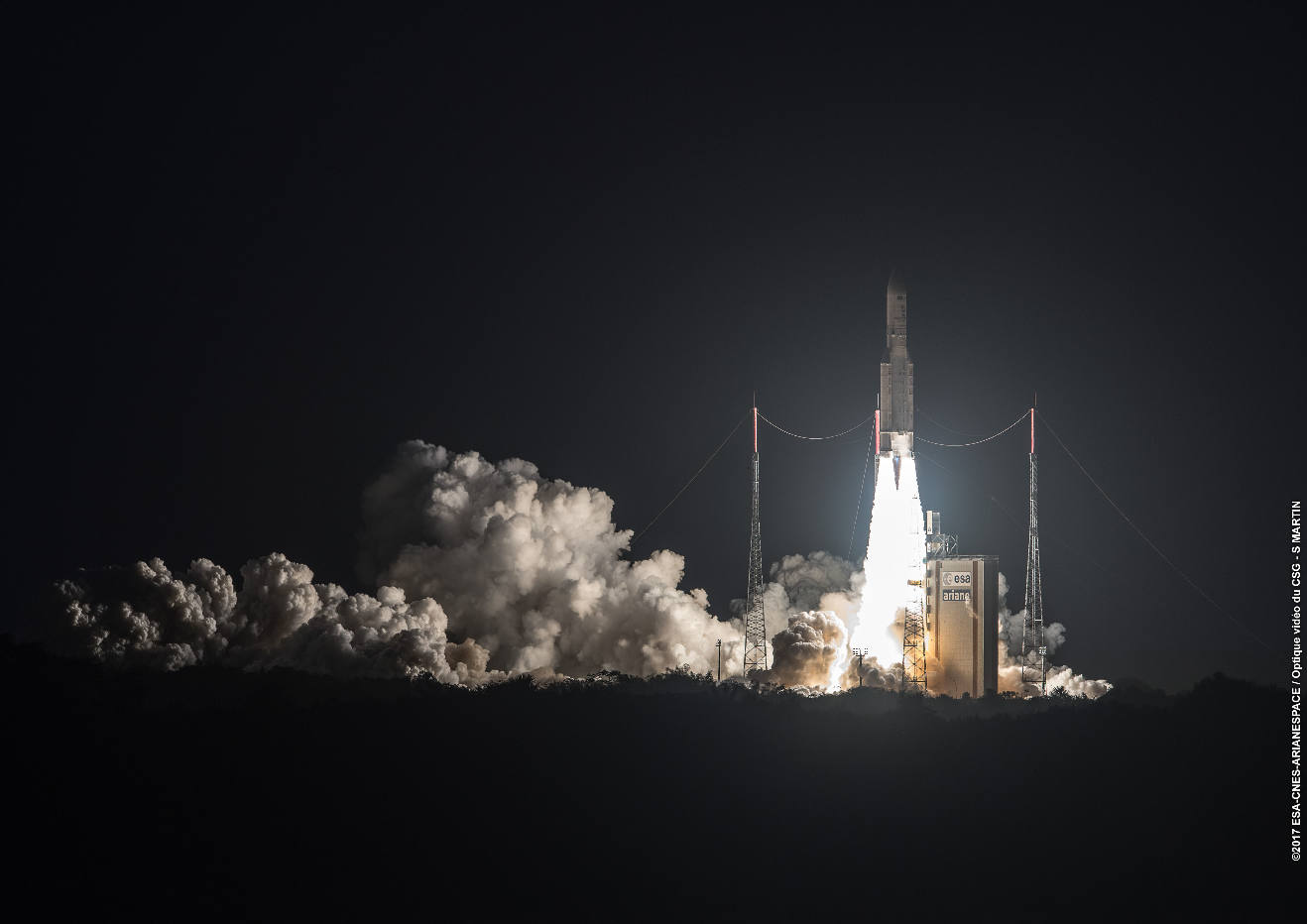Over the past two years, satellites built by Thales Alenia Space have taken over 400 3D-printed metallic and polymer parts into orbit.
With the recent launches of the Telkom 3S, SGDC and KOREASAT-7 satellites, plus satellites in the Iridium Next constellation, Thales Alenia Space says it has now sent into orbit 79 metal parts made by additive manufacturing (3D printing) and 350 polymer tube supports for chemical propulsion systems.
Out of the total of 79 parts, 47 have different designs, carrying out 13 different functions The tube supports are all identical, with 35 used on each of the ten satellites launched to date.
The company sent its first 3D-printed aluminium antenna support into orbit on the TurkmenAlem MonacoSat satellite in April 2015. Since then, all of the company’s telecommunications satellites feature lightweight 3D-printed antenna supports and reflector fittings.
In mid-January 2017, with the successful launch of the first Iridium NEXT satellites, Thales Alenia Space also sent into orbit satellites with propulsion system tube supports, the first flight application of thermoplastic additive manufacturing.
The next step for Thales Alenia Space will be the manufacture of larger and larger parts using this process, such as dual antenna supports for a new telecom satellite to be launched shortly. These parts measure 480 x 378 x 364 mm, a real challenge from the manufacturing standpoint.
The benefits of additive manufacturing are well known — replacement of several parts with a single piece structure, leading to reductions in weight, along with cost savings. Additive manufacturing also means greater design freedom and the absence of tooling, which makes it the perfect technology for complex parts – with curves, holes or cavities – that are produced in small runs or on a one-off basis.
Thales Alenia Space generally focuses on metallic materials for this process, including aluminium and titanium. The most commonly used technique is laser beam melting (LBM), with a bed of metallic powder.

